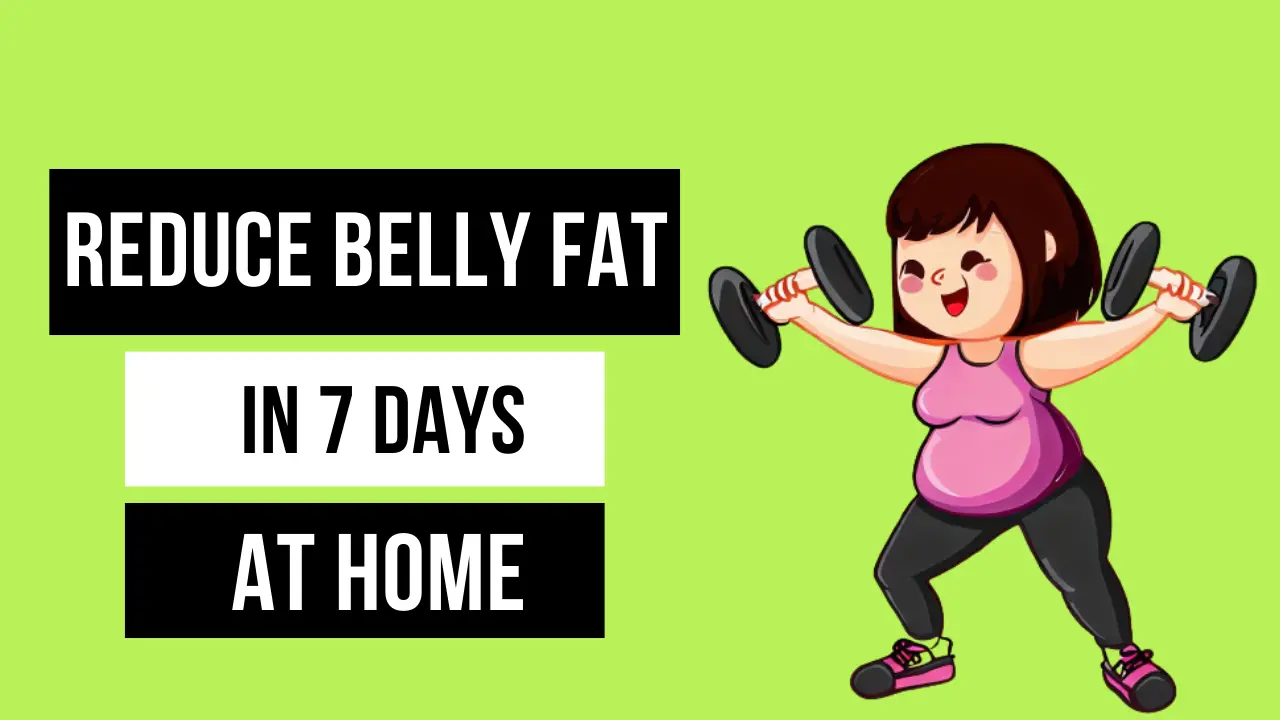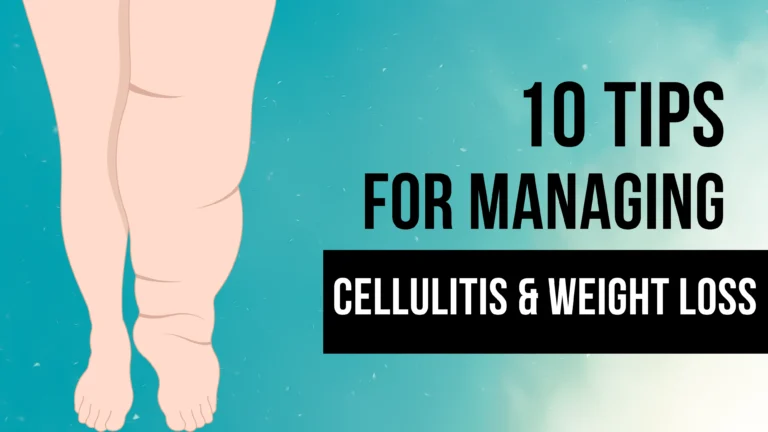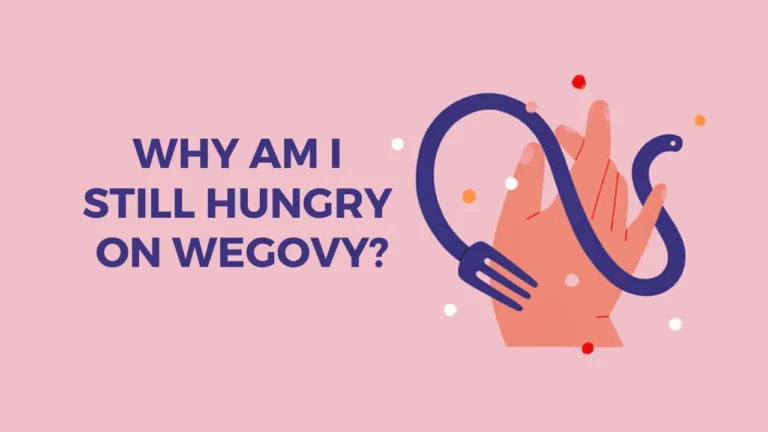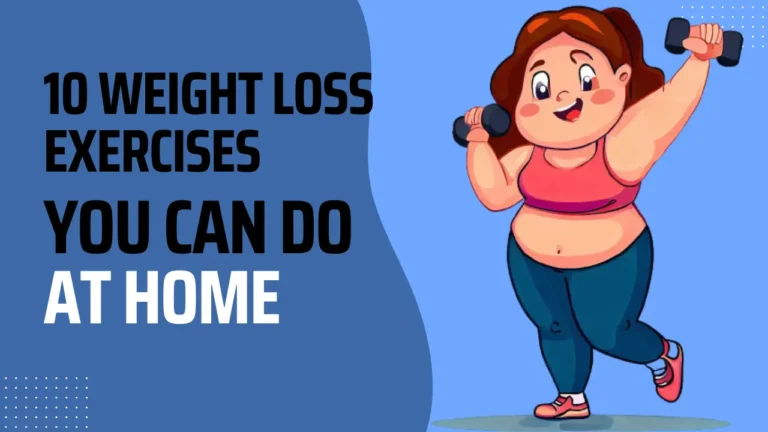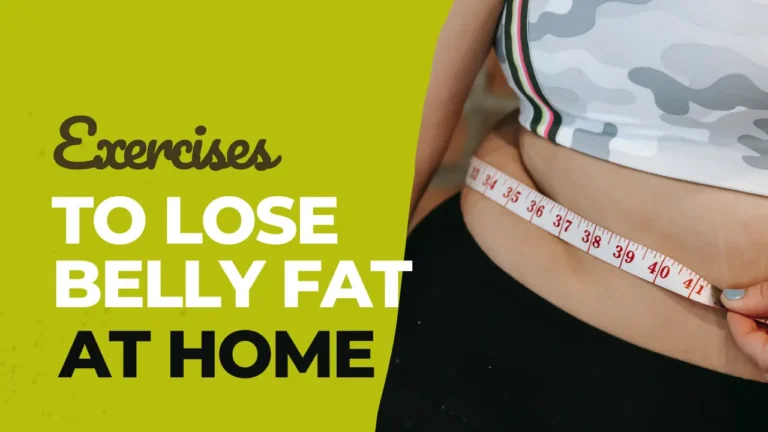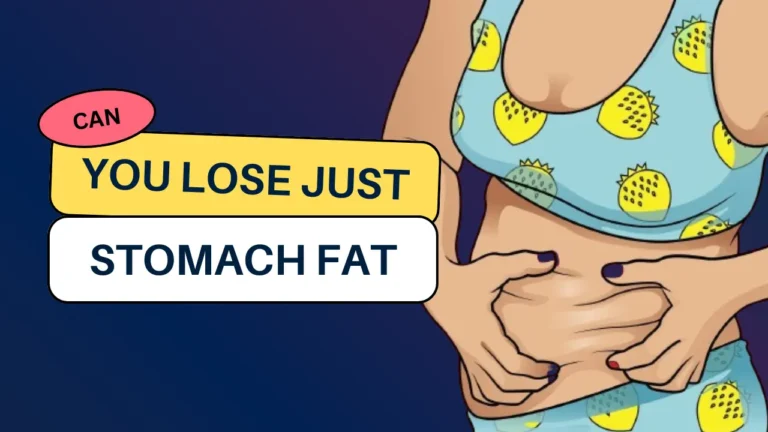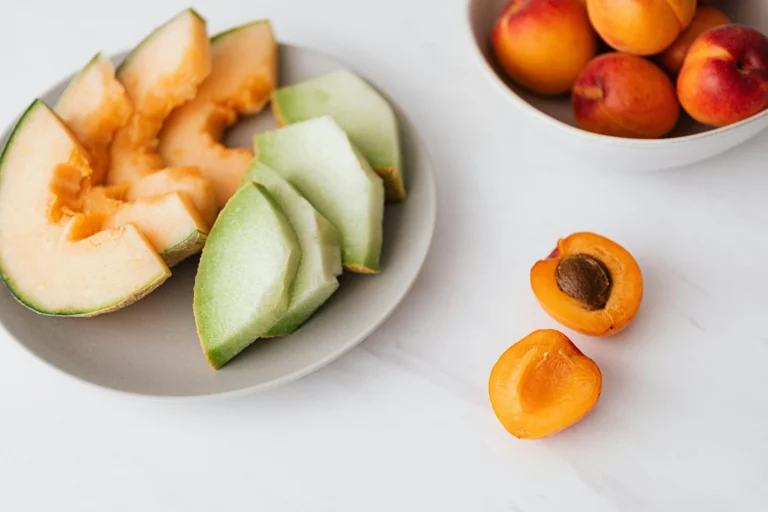How to reduce belly fat in 7 days at home with exercise?
Key Takeaways
- Belly fat poses serious health risks, including heart disease and diabetes.
- Exercise reduces belly fat and lowers heart disease and diabetes risk.
- Assess your health with waist circumference and BMI measurements.
- Realistic, long-term goals are essential for sustainable weight loss.
- A calorie deficit through diet and exercise is key to losing belly fat.
- Superfoods help, but supplements should be used cautiously.
Introduction
Having belly fat can be pretty dangerous as it envelops our internal organs, posing an increased risk of various health issues, like heart disease, diabetes, liver complications, certain types of cancer and even sudden death. Visceral fat tends to accumulate around the abdominal organs situated in our abdomen. It is known to be metabolically active. This fat type is associated with conditions such as heart disease, cancer and dementia.
Integrating exercise into your routine offers several benefits regarding reducing belly fat. It helps diminish visceral fat levels, lowering the chances of developing heart disease and diabetes.
UT Southwestern recently conducted a study on reducing belly fat. The study revealed that changing your lifestyle can play a significant role in reducing belly fat. Moreover, the study also mentions that reducing belly fat could significantly reduce the chances of developing heart failure in adults.
Furthermore, exercising improves overall well-being. Besides, it helps to minimise the risks of health conditions related to excess fat – like diabetes, stroke, impaired lung function, heartburn, sleep problems and migraines.
Assess Your Current State

You must understand your current health condition to start your journey. In this case, tools like Body Mass Index (BMI) can help you to indicate your weight and its potential impact on your health [1]. However, consider measuring your waist circumference and determining your body mass index (BMI) to assess your current state.
Measuring your waist circumference
This is a simple and effective way to estimate your abdominal fat, which is associated with an increased risk of certain health conditions such as heart disease and type 2 diabetes [1]. To measure your waist circumference, follow these steps:
- Stand up straight and exhale.
- Use a tape measure to measure your waist at the level of your navel.
- Make sure the tape measure is snug but not compressing your skin.
A waist circumference of more than 35 inches (88 cm) for women and 40 inches (102 cm) for men is considered high and may indicate an increased risk of obesity-related health problems [1].
Determining your body mass index (BMI)
BMI is a person’s weight in kilograms divided by the square of their height in meters. It is a screening tool that can help estimate your body fatness [1]. To calculate your BMI, use the BMI Calculator or find your height and weight in a BMI Index Chart [1]. Here are the BMI ranges:
- Underweight: BMI less than 18.5
- Normal weight: BMI 18.5-24.9
- Overweight: BMI 25-29.9
- Obesity: BMI 30 or higher
Also Read: 10 Weight Loss Exercises You Can Do at Home
Keep in mind that BMI is not a diagnostic tool for disease risks, and a trained healthcare provider should perform other health assessments to evaluate disease risk and diagnose disease status [1].
Setting Realistic Goals
Establishing realistic expectations for a 7-day timeframe
When establishing realistic expectations for a 7-day timeframe, you should consider the following: Set a timeframe that is both specific and achievable, avoiding goals that are either too long or too short [2]. You can utilize the SMART method to craft goals that are Specific, Measurable, Attainable, Relevant, and Time-based, ensuring they are realistic and well-defined [3]. For instance, improving time management skills through a one-week course is more realistic than expecting significant progress in just a day [4].
Moreover, it’s crucial to prioritize tasks by identifying time-consuming activities and assessing their importance to allocate your time effectively [4]. When scheduling tasks, allocate time for both obligatory and leisure activities to maintain a balanced and realistic approach to your 7-day timeframe [4]. By following these strategies, drawn from various sources [2][3][4], you can set achievable goals and make the most of your week.
The importance of focusing on overall health rather than quick fixes
It’s crucial to prioritize long-term well-being over quick fixes regarding health. While quick fixes may offer immediate results, they are mostly considered unsustainable. Besides, it might have negative impacts on our health [5]. Instead, you should focus on developing healthy habits we can maintain over time [6]. That involves making changes to our eating and exercise routines [7][8] and giving importance to stress reduction and self-care [9]. Most importantly, avoiding fad diets that promise quick results [8]. By prioritizing overall health, you can enhance our mental and emotional well-being, ultimately leading to a better quality of life [9].
Creating a Calorie Deficit
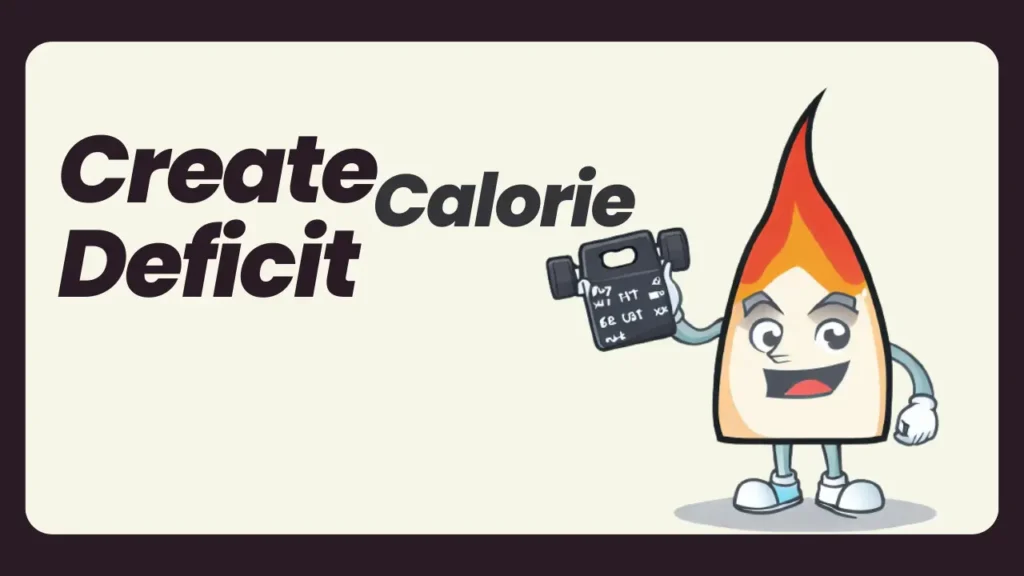
Understanding the science behind weight loss – burning more than consuming
When you are on a weight loss journey, factors like hormones, brain function and metabolism influence it [10]. According to research [11], your body tends to resist weight loss by trying to regain it. This happens because our metabolism becomes more efficient, requiring fewer calories, and our hormones send signals that increase the hunger hormone ghrelin, which leads to consuming higher calories [10].
However, it is possible to achieve sustainable weight management by setting attainable expectations based on how our bodies respond to weight loss efforts and prioritizing overall health and well-being instead of seeking quick solutions [10].
Also Read: 5 Weight Loss Exercises That Will Help You Shed Pounds Fast
It’s fascinating how certain people have achieved results in losing weight by following high-fat diets such as the ketogenic or Keto diet. The primary focus of these types of diets is getting calories from consuming fats. Around 10 to 20% of the calories come from protein and only 5% from carbohydrates [12]. On the other hand, studies indicate that dieting might be more impactful than exercise when shedding pounds [13]. Moreover, it’s essential to consider that diets low in fat may not just result in weight loss by reducing calorie intake but could also potentially affect metabolism [15], “some reputable sources affirmed.”
Choosing a suitable daily calorie intake for your body type
The number of calories you should consume each day depends on factors such as your body type, age, gender, height, weight and activity level [15][16][17]. Nevertheless, to determine your calorie intake, identify your body type – Ectomorph, mesomorph or endomorph [18][19]. Besides, this will help you find the balance of macronutrients (protein, carbohydrates and fats) and calories for your body.
In addition, calorie calculators can be aids for individuals as they take into account factors such as age, gender, height, weight and activity level [17][20]. These calculators provide an estimation of the calories you need. However, if you require guidance or have health concerns, it is advisable to seek advice from a healthcare professional, like a registered dietitian or doctor [16][17]. They can provide recommendations based on your needs and health objectives.
It’s essential to keep in mind that maintaining a lifestyle involves more than consuming the right amount of calories each day. To prioritize your well-being, make sure to follow a balanced diet, regular physical activity, get sufficient sleep, and effectively manage stress.
Home Exercises To Reduce Belly Fat
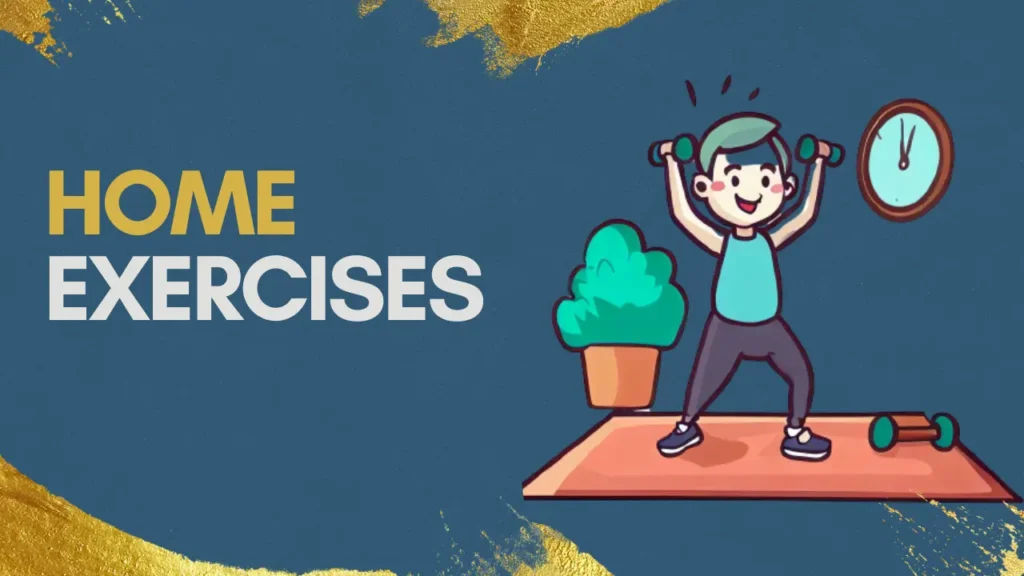
Cardio
Cardio is the best way to burn calories and reduce overall body fat, including belly fat. Some effective cardio exercises include:
- Jumping jacks
- Burpees
- Mountain climbers
- High knees
- Butt kicks
- Running in place
- Jumping rope
Strength training
Strength training helps to build muscle, which can boost your metabolism and help you burn more calories at rest. Some effective strength training exercises for reducing belly fat include:
- Plank
- Crunches
- Leg raises
- Russian twists
- Bird dogs
- Side planks
- Sit-ups
Also Read: 7 Best Weight Loss Exercises for Beginners
7-day workout plan
- Day 1: Cardio for 30 minutes + strength training for 15 minutes
- Day 2: Rest
- Day 3: Cardio for 30 minutes + strength training for 15 minutes
- Day 4: Rest
- Day 5: Cardio for 30 minutes + strength training for 15 minutes
- Day 6: Rest
- Day 7: Cardio for 30 minutes + strength training for 15 minutes
Superfoods and Supplements for Belly Fat Reduction
Superfoods
You may be dealing with the common problem of belly fat, but fortunately, several superfoods can help in its reduction, as supported by various sources. Beans and lentils, rich in fibre and plant-based protein, can aid in eliminating belly fat and building lean body mass [21]. Additionally, kale, a renowned leafy green vegetable, is packed with health-promoting properties and is an excellent fibre source, contributing to belly fat reduction. Loaded with antioxidants and fibre, Berries are another option to combat inflammation and facilitate weight loss [22].
Moreover, green tea, a natural metabolism booster rich in antioxidants, can aid in burning belly fat. If you enjoy eggs, their versatility and protein-rich nature can help reduce hunger and regulate your appetite [22]. For seafood lovers, salmon, thanks to its polyunsaturated fats and protein content, is known to help trim belly fat [23].
Remember, avocados are a source of healthy fats, fibre, and potassium, reducing belly fat and enhancing heart health [24]. Brimming with healthy fats, protein, and fibre, nuts can mitigate inflammation and promote weight loss [24]. If you prefer a hearty breakfast, oats, a source of soluble fibre, can help regulate your appetite and reduce belly fat [22].
Furthermore, yogurt, rich in probiotics, enhances gut health and aids in belly fat reduction [24]. While incorporating these superfoods into your diet can be beneficial for reducing belly fat and strengthening overall health, it’s essential to remember that a balanced diet and regular exercise also play crucial roles in achieving weight loss and overall well-being.
Supplements
Supplements are not necessary if you want to lose belly fat. The effective way to eliminate belly fat is by following a balanced diet, maintaining a regular exercise routine and making healthy lifestyle choices. Although some supplements claim to aid in weight loss, caution is essential as their effectiveness can vary. Instead, focus on consuming calories, engaging in activities and making overall healthy choices to create a calorie deficit and promote fat loss. It’s essential to remember that spot reduction is generally ineffective, and while targeted exercises can strengthen muscles, they may not necessarily burn fat from a specific area. Prioritize consulting with healthcare before incorporating supplements into your routine, as safety and individual needs should always be considered.
Tracking Progress and Making Adjustments
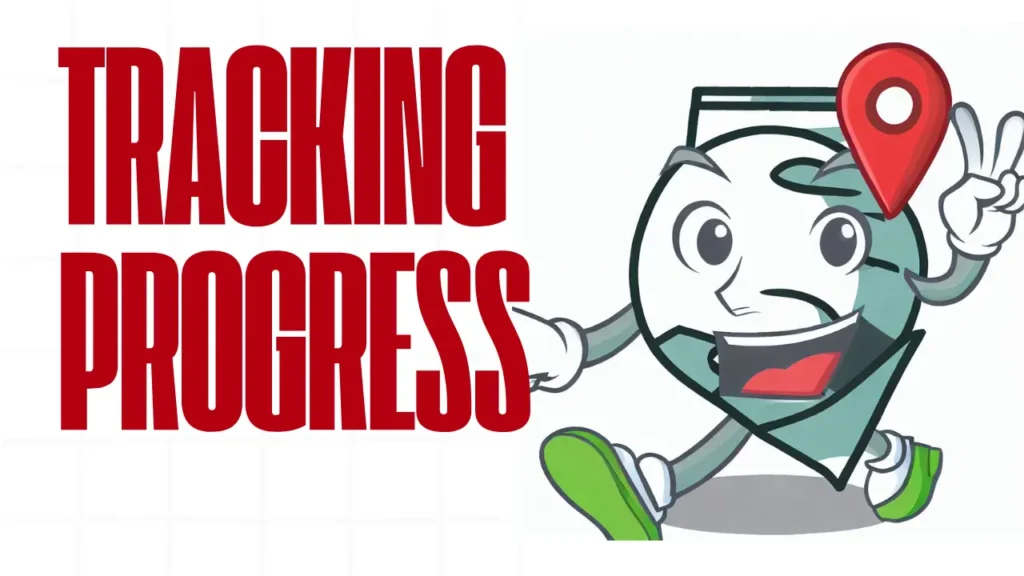
Tracking your progress throughout the 7-day period is essential for maintaining motivation and making necessary adjustments. Several tools can aid in this endeavour, drawing from various sources. First, keeping a training diary [25] allows you to meticulously monitor physical activity, documenting exercise type, duration, intensity, and post-workout feelings. Measuring tools like bathroom scales, tape measures, and body fat callipers [25] help track changes in weight, body composition, and other physical metrics. Progress monitoring tools, including academic progress monitoring tools, reading and mathematics probes, and fluency screening tools [26][27][28], assist in tracking specific skill advancements.
Additionally, apps and wearable devices like fitness trackers, calorie counters, and food diaries [29] provide insights into physical activity, calorie intake, and health-related data. To assess results and make necessary modifications, it’s crucial to set specific goals [30] and regularly monitor progress, particularly in areas requiring adjustments [25]. Maintaining flexibility and seeking help from healthcare professionals like registered dietitians or doctors [25][28] when needed ensures a holistic approach to achieving health goals.
Conclusion
In conclusion, addressing belly fat is a matter of aesthetics and a critical step in safeguarding your overall health and well-being. This comprehensive guide has outlined various aspects of tackling belly fat, emphasizing the importance of adopting a holistic and sustainable approach. It is evident that exercise, mainly cardio and strength training, is pivotal in reducing belly fat and improving overall health. Additionally, understanding your current health status through tools like waist circumference and BMI measurement is a crucial first step. Setting realistic goals and prioritizing long-term well-being over quick fixes are fundamental principles.
When it comes to calorie intake, individual factors play a significant role, and consulting healthcare professionals is advisable. Incorporating superfoods into your diet can complement your efforts, but supplements should be cautiously approached. Finally, tracking progress and making necessary adjustments are essential for achieving and maintaining your health goals. By embracing these principles and committing to a healthier lifestyle, you can effectively reduce belly fat and enhance your quality of life while reducing the risk of various health issues.
FAQ
Q: Can I target belly fat specifically through exercise?
A: No, you can’t spot-reduce belly fat, but a mix of aerobic and resistance exercises can help lower overall body fat and enhance your health.
Q: Are there any recommended exercises to avoid for belly fat reduction?
A: The impact of exercises varies among individuals, but generally, it’s advisable to steer clear of lower back-stressing exercises like sit-ups and crunches and opt for full-body engagement exercises like planks, squats, and lunges.
Q: Is it safe to attempt rapid belly fat reduction in just 7 days?
A: No, attempting rapid belly fat reduction in just 7 days is unsafe. Your health can suffer from the negative consequences of losing weight too quickly.
Reference
1) Assessing your weight. (2023, June 9). Centers for Disease Control and Prevention. https://www.cdc.gov/healthyweight/assessing/index.html
2) IRIS | Page 7: Challenging, ambitious, measurable annual goals. (n.d.). https://iris.peabody.vanderbilt.edu/module/iep01/cresource/q3/p07/
3) https://www.indeed.com/career-advice/career-development/how-to-set-realistic-goals
4) Griffeth, L. L. (n.d.). Time management: 10 Strategies for Better Time Management. UGA Cooperative Extension. https://extension.uga.edu/publications/detail.html?number=C1042&title=time-management-10-strategies-for-better-time-management
5) Department of Health & Human Services. (n.d.-b). Weight loss and fad diets. Better Health Channel. https://www.betterhealth.vic.gov.au/health/healthyliving/weight-loss-and-fad-diets
6) Changing your habits for better health. (2023). National Institute of Diabetes and Digestive and Kidney Diseases. https://www.niddk.nih.gov/health-information/diet-nutrition/changing-habits-better-health
7) Department of Health & Human Services. (n.d.-b). Weight loss – a healthy approach. Better Health Channel. https://www.betterhealth.vic.gov.au/health/healthyliving/weight-loss-a-healthy-approach
8) 10 simple ways to improve your health. (n.d.). Rush University System for Health. https://www.rush.edu/news/10-simple-ways-improve-your-health
9) Lawler, M. (2023, March 17). What Is Self-Care, and Why Is It So Important for Your Health? EverydayHealth.com. https://www.everydayhealth.com/self-care/
10) Northwestern Medicine. (2022, December 8). How your body fights weight loss. https://www.nm.org/healthbeat/healthy-tips/how-your-body-fights-weight-loss
11) The science Behind Weight Loss | Truth About Weight®. (n.d.). https://www.truthaboutweight.com/the-science-behind-weight-loss.html
12) Harvard Health. (n.d.). Diet & weight loss – Harvard Health. https://www.health.harvard.edu/topics/diet-and-weight-loss
13) Walton, A. G. (2013, September 4). The 6 Weight-Loss tips that science actually knows work. Forbes. https://www.forbes.com/sites/alicegwalton/2013/09/04/the-6-weight-loss-tips-that-science-actually-knows-work/?sh=55238c83455b
15) Mph, K. M. Z. R. L. (2009, August 27). How many calories do you really need? WebMD. https://www.webmd.com/diet/calories-chart
16) Brazier, Y. (2023, April 14). How many calories should I eat a day? https://www.medicalnewstoday.com/articles/245588
17) Rd, R. a. M. (2023a, May 4). How Many Calories Should You Eat Per Day to Lose Weight? Healthline. https://www.healthline.com/nutrition/how-many-calories-per-day
18) Summers, S. (2020, December 25). How many calories you should eat based on body type. The Fitness Junkie Blog. https://www.thefitnessjunkieblog.com/article/how-many-calories-you-should-eat-based-on-body-type
19) Migala, J. (2022, February 24). Body type diet: Are you an ectomorph, mesomorph, or endomorph? EverydayHealth.com. https://www.everydayhealth.com/diet-nutrition/body-type-diet-are-you-ectomorph-mesomorph-endomorph/
20) Adashun, T. (2021, February 18). The Perfect Calorie Calculator For Every Body Shape Goal. SuperHuman Fitness. https://superhumanfitness.com/tools/calorie-calculator/
21) Kate. (2020). How to burn belly fat: 18 super foods, tips and exercises that work. Meraki Lane. https://www.merakilane.com/how-to-burn-belly-fat-18-super-foods-tips-and-exercises-that-work/
22) Rd, R. a. M. (2021, April 6). 20 best superfoods for weight loss. Healthline. https://www.healthline.com/nutrition/superfoods-for-weight-loss
23) 7 foods that Burn belly Fat | Select Health. (2019, January 3). SelectHealth.org. https://selecthealth.org/blog/2017/09/7-foods-that-burn-belly-fat
24) Weight loss superfoods — fact or fiction? (n.d.). WebMD. https://www.webmd.com/diet/ss/slideshow-diet-superfoods
25) Department of Health & Human Services. (n.d.-a). Physical activity – setting yourself goals. Better Health Channel. https://www.betterhealth.vic.gov.au/health/healthyliving/physical-activity-setting-yourself-goals
26) IRIS | Page 3: Progress Monitoring. (n.d.). https://iris.peabody.vanderbilt.edu/module/dbi2/cresource/q2/p03/
27) Screening, diagnosing, and progress monitoring for fluency: The details | Reading Rockets. (n.d.). Reading Rockets. https://www.readingrockets.org/topics/assessment-and-evaluation/articles/screening-diagnosing-and-progress-monitoring-fluency
28) https://educationnorthwest.org/sites/default/files/monitoring-student-learning.pdf
29) https://www2.ed.gov/about/offices/list/oela/english-learner-toolkit/chap8.pdf
30) Formative and summative assessments. (2021, June 30). Poorvu Center for Teaching and Learning. https://poorvucenter.yale.edu/Formative-Summative-Assessments

